Navigating Inclusion and Diversity Hiring in the Modern Workplace
Fostering an inclusive and diverse workforce is not merely a passing fad in the workplace of today; it is essential to creating a vibrant, innovative, and competitive organization. Here in this blog we shall emphasize on the Indian context and examine the difficulties, best practices and importance of inclusive and diverse employment. We will delve into the meaning of diversity and inclusion, why it is important, share pertinent research and statistics, and offer guidance on how to traverse the complexities of this crucial aspect of contemporary talent management.

Understanding Diversity and Inclusion
Diversity Hiring:
Actively recruiting and attracting people from diverse backgrounds—including different racial and ethnic backgrounds, genders, ages, sexual orientations, abilities, and more—is a key component of diversity hiring. This process ensures that a diverse demographic is represented in the candidate pool.
Inclusive Hiring:
Recruiting people from a diverse pool is only one aspect of inclusive hiring; another is fostering a workplace that is friendly and fair to all workers. It guarantees that, upon employment, people from varied backgrounds will not only be welcomed but also appreciated and given the opportunity to share their distinct viewpoints and experiences.
Diversity Hiring: Why It Matters
- Fostering Creativity
International and Indian research consistently shows that diverse teams are more creative and innovative. Diverse perspectives result in improved problem-solving and more inventive solutions.
- Assessing the Market
India is a multicultural nation with numerous languages, cultures, and traditions. Businesses can better understand and cater to a varied consumer base when they have a diverse team.
- Legal and ethical obligations
Multiple laws and regulations in India, such as the Equal Remuneration Act of 1976, promote gender equality. Noncompliance can result in severe legal consequences, making hiring diverse candidates an ethical and legal necessity.
- Strategic Advantage
Businesses can attract and keep the greatest personnel by promoting diversity and inclusion. Prioritizing diversity gives businesses an advantage in the job market and makes them more appealing to potential recruits.
- Diversity Hiring in India
In recent years, there has been a significant increase and focus on diversity recruiting in India. Numerous organizations are presently engaged in the active implementation of strategies and protocols. This is aimed at fostering an inclusive and diverse workforce.

Best Practices and Strategies
- Putting In Place The utilization of diverse interview panels serves to mitigate unconscious bias and ensures a more comprehensive assessment of candidates.
- Developing inclusive job descriptions that avoid perpetuating stereotypes and employ gender-neutral language can effectively attract a diverse range of potential candidates.
- The Affirmative Action Programme: In order to ensure that marginalized communities such as Scheduled Castes (SC), Scheduled Tribes (ST), and Other Backward Classes (OBC) are afforded fair opportunities, many public and non-public organizations in India are required to implement affirmative action strategies.
- Employee Resource Groups (ERGs) provide a forum for employees of diverse backgrounds to engage in dialogue, share personal experiences, and contribute recommendations aimed at fostering greater workplace inclusivity.
Real-World Examples
- HCL Technologies: HCL’s “One Globe, One Culture” initiative aims to foster a diverse and inclusive work environment. The company actively promotes gender diversity and inclusion through mentoring, leadership development, and networking opportunities.
- IBM India: IBM India has been a leader in diversity and inclusion initiatives. They have focused on gender diversity, LGBTQ+ inclusion, and hiring individuals with disabilities. IBM’s Employee Resource Groups play a crucial role in this process.
- Tata Steel: Tata Steel actively promotes diversity and inclusion. Targeted hiring and development programs ensure employment opportunities for marginalized communities.
The Challenges of Diversity Hiring
Despite the progress, challenges persist in diversity hiring:
- Unconscious Bias: Unconscious bias can affect hiring decisions. Training and awareness are essential to overcome this challenge.
- Cultural Sensitivity: India’s diversity goes beyond just gender and ethnicity. It extends to regional, linguistic, and religious differences. Organizations must navigate these intricacies.
- Measuring Impact: Many companies struggle to measure the impact of their diversity hiring initiatives. It’s essential to establish clear metrics and evaluate progress continually.
- Leadership Representation: While there is progress in hiring, the representation of diverse groups at leadership levels remains a challenge. Organizations need to focus on developing diverse talent pipelines for leadership roles.
Statistics and Research from India
- Diversity and inclusion were prioritized by 71% of Indian organizations surveyed, according to a Mercer analysis.
- According to a McKinsey study, Indian businesses with a larger percentage of women in senior positions had a 21% higher chance of outperforming their competitors.
- The Indian Psychiatry Society’s research revealed a marked rise in mental health problems among Indian workers amid the COVID-19 pandemic. This highlights how important it is to have inclusive policies that promote mental health.

Navigating Inclusive and Diversity Hiring
- Ongoing Education: Provide regular training and awareness campaigns to keep staff members informed and educated about the value of diversity and inclusion.
- Leadership Commitment: Make sure that leaders actively support diversity and inclusion efforts and are devoted to these causes at all levels.
- Evaluation: Define precise measures for diversity recruiting and evaluate the results of diversity and inclusion initiatives on a regular basis.
- Adaptability and Flexibility: Workplaces are always changing. Keep your diversity and inclusion initiatives agile and adaptive to meet the evolving demands of your workforce.
Collaboration with External Organizations: Assist non-governmental organizations and external organizations that prioritize inclusivity and diversity. They may offer priceless resources and insights.
Conclusion
To cultivate a vibrant, innovative, and competitive organization, diversity hiring and inclusion in the workplace are essential. In this regard, India’s diverse and dynamic workforce presents unique opportunities and challenges. India’s real-world examples, research, and statistics highlight the significance and influence of diversity and inclusion initiatives.
Unconscious bias, cultural sensitivity, measurement, and leadership representation remain obstacles, but organizations committed to diversity and inclusion will benefit from a more diverse, equitable, and innovative workforce. By actively navigating the complexities of recruiting for diversity, organizations can not only attract top talent but also contribute to a more inclusive and equitable society.
As the nation’s exclusive platform of its kind, DeiJobs is leading the charge in creating a more equitable workforce and promoting a culture of acceptance and unity in the workplace.





